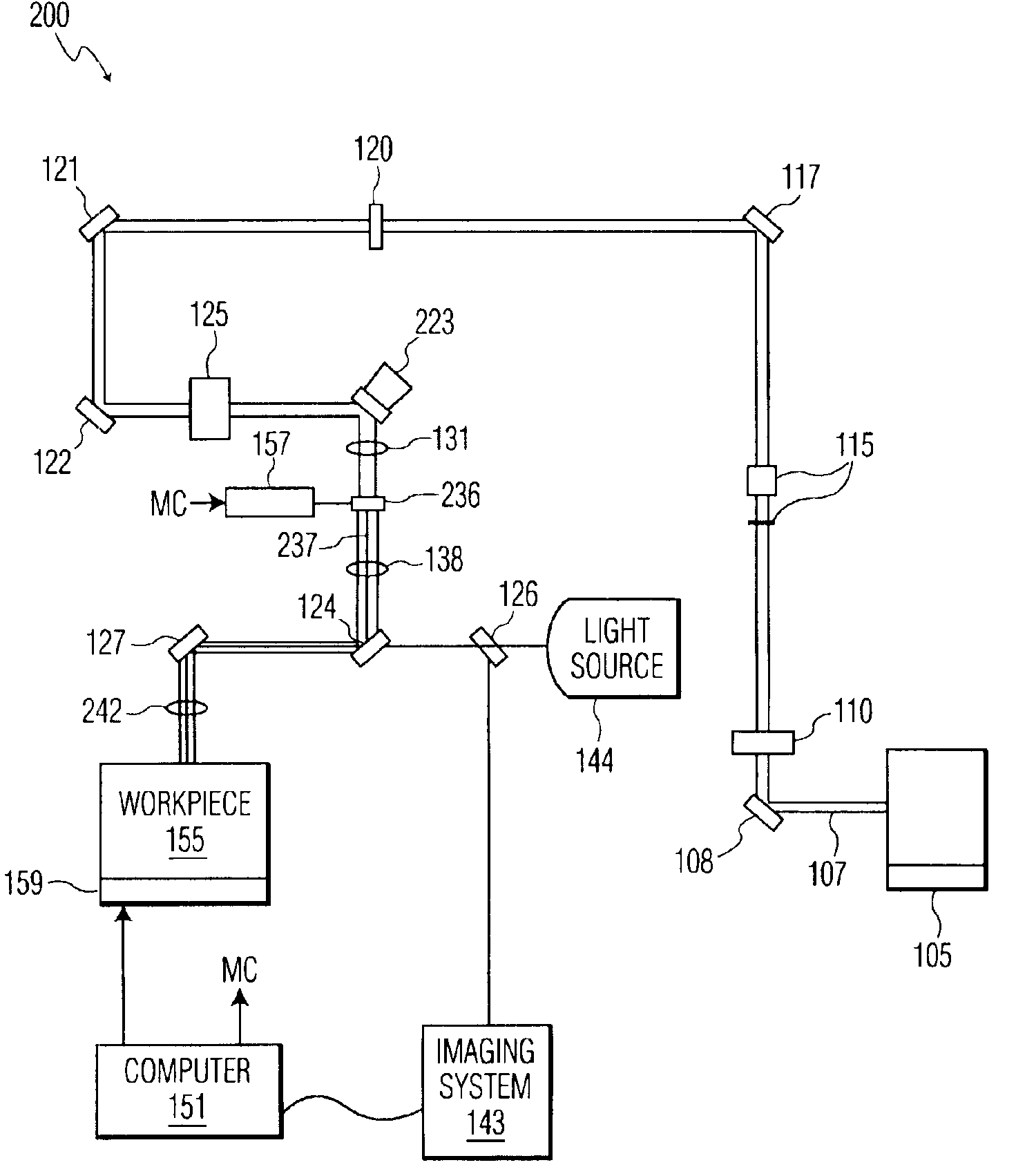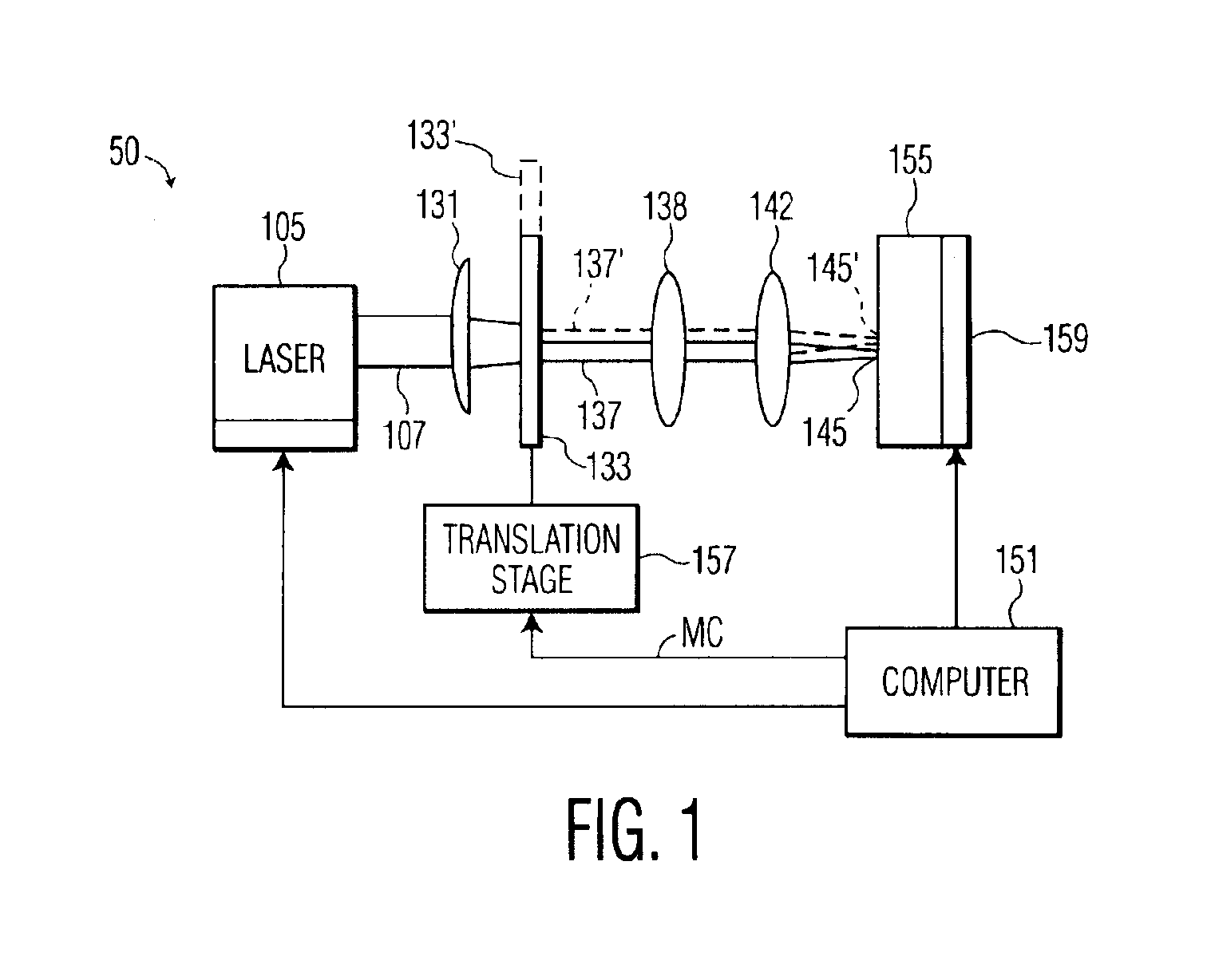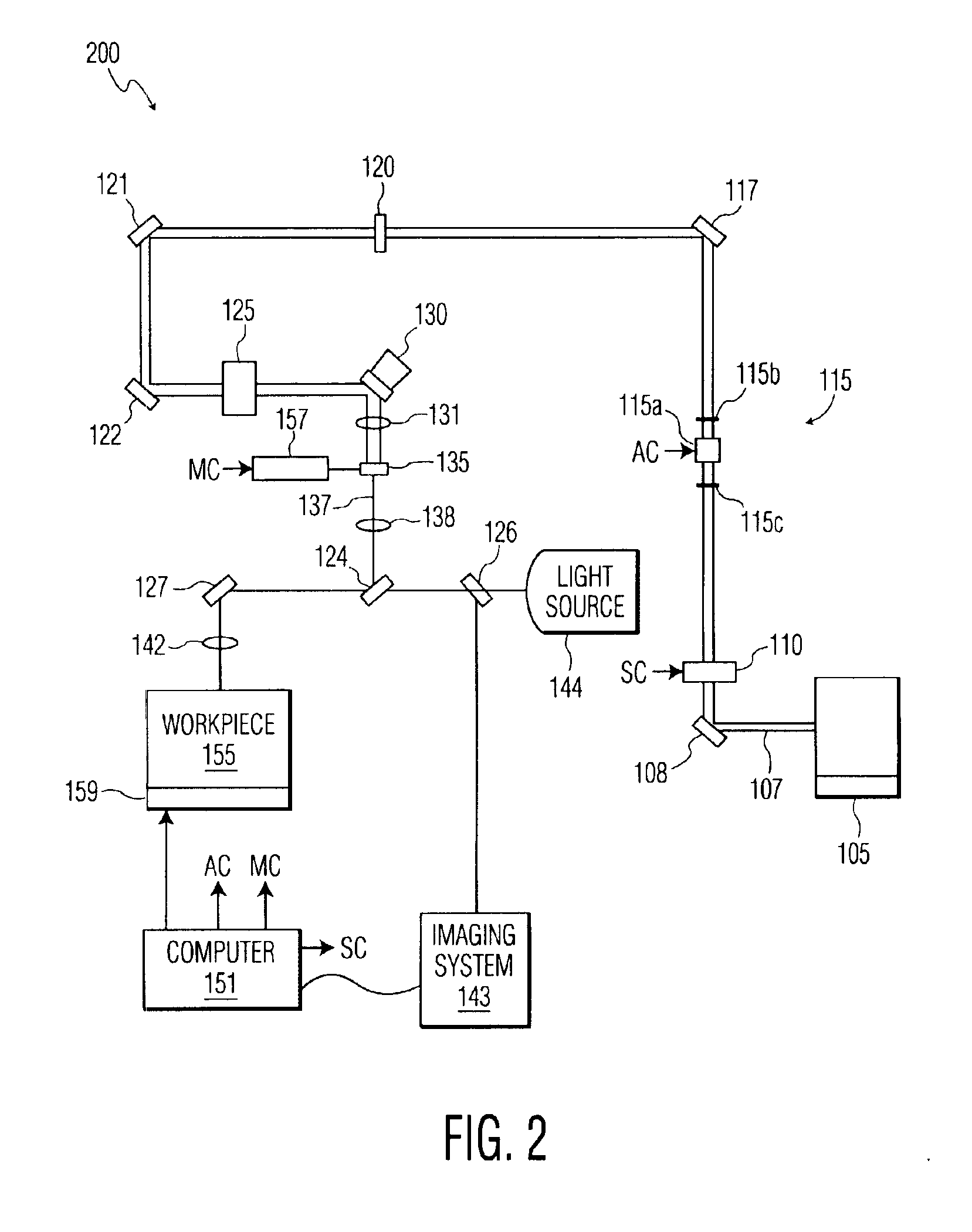Method of drilling holes with precision laser micromachining
a laser micromachining and laser micromachining technology, applied in the field of precision laser micromachining, can solve the problems of inability to move the holder with a level of accuracy, the current laser micromachining method, and the inability to drill features with the sub-micron accuracy and precision needed for photonic crystals
- Summary
- Abstract
- Description
- Claims
- Application Information
AI Technical Summary
Problems solved by technology
Method used
Image
Examples
second embodiment
[0020]FIG. 2 is a block diagram of a drilling system 200. The system 100 includes a laser 105 which generates a laser beam 107 with a wavelength of 775 nm. In an alternative embodiment, the wavelength of laser beam 107 may be 387 nm. In such an alternative embodiment, the other characteristics of the system may be adjusted accordingly. Laser beam 107 travels along an optical path until it is incident upon first mirror 108. First mirror 108 is a conventional laser mirror having a high reflectivity at least at the wavelength of the laser beam 107. In this exemplary embodiment, first mirror 108 is highly reflective of 775 nm wavelength light. First mirror 108 redirects beam 107 along an optical path where it is incident upon shutter 110 which opens and closes to selectively illuminate work piece 155. Shutter 110 is a conventional laser shutter used to control the propagation of laser beam 107. In an exemplary embodiment, shutter 110 is an electric shutter controlled by a shutter contro...
first embodiment
[0032]The combination of lens 138 and lens 142 provides the same function in this embodiment as the “eyepiece” lens 138 and the microscope objective lens 142 in the In an exemplary embodiment, 100× lens 142 has a 2 mm focal length and a 1 cm working distance. The exemplary embodiment may use an Ultra Long Working Distance Lens (ULWD) having a working distance of 1 cm as the lens 142. Alternatively, a conventional 2 mm lens may be used along with an air knife to remove any material that is ablated from the work piece.
[0033]The combination of lens 138 (focal length f1=60 mm) and 100× lens 142 (focal length f2=2 mm) creates a de-magnification of thirty (f1 / f2) of sub-beam 137 upon work piece 155. Thus, the size of the image of the mask 135 on the work piece is 1 / 30th the size of the image at the mask 135. This de-magnification of thirty means a reduced-size image of sub-beam 137 is moved one-thirtieth of the distance that aperture 135 is moved. In one example, therefore, when aperture...
PUM
| Property | Measurement | Unit |
|---|---|---|
| size | aaaaa | aaaaa |
| size | aaaaa | aaaaa |
| wavelength | aaaaa | aaaaa |
Abstract
Description
Claims
Application Information
 Login to View More
Login to View More - R&D
- Intellectual Property
- Life Sciences
- Materials
- Tech Scout
- Unparalleled Data Quality
- Higher Quality Content
- 60% Fewer Hallucinations
Browse by: Latest US Patents, China's latest patents, Technical Efficacy Thesaurus, Application Domain, Technology Topic, Popular Technical Reports.
© 2025 PatSnap. All rights reserved.Legal|Privacy policy|Modern Slavery Act Transparency Statement|Sitemap|About US| Contact US: help@patsnap.com



